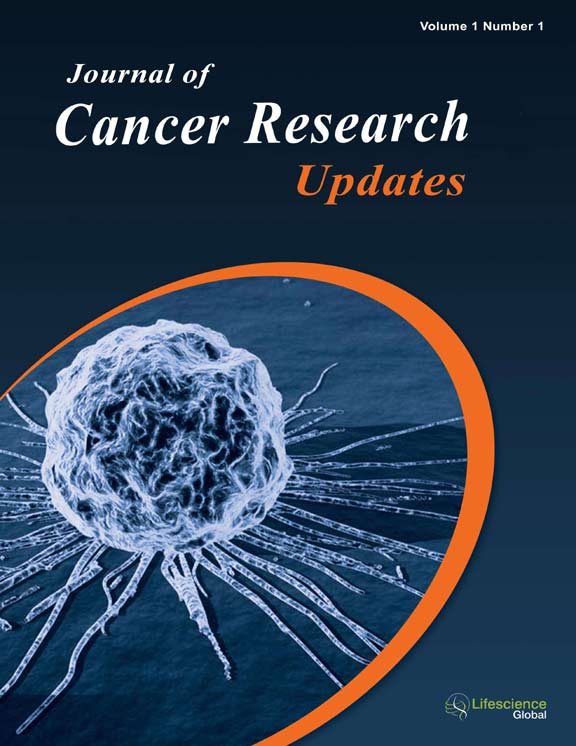jcru
|
|
Abstract: Cancer pain can be severe, yet is often undertreated. In many parts of the world, there is a reluctance to prescribe narcotics for analgesia. Since the World Health Organization first published its “pain ladder” treatment paradigm in 1988, cancer pain is usually treated initially with nonopioids, then weak opioids, and finally strong opioids along with adjuvant agents as the pain intensifies. When initiating opioid therapy for cancer patients, the clinician must consider whether the patient is opioid naïve or opioid experienced. For naïve patients, opioid therapy must be started slowly, at a low dose initially, with adverse events anticipated and treated proactively. In all cases, opioid titration involves a controlled, stepwise increase of opioid dose until adequate (but not necessarily 100%) analgesia is achieved. A variety of opioid products are available, including immediate-release and controlled-release formulations. Immediate-releaseformulations are designed for easy titration to adequate analgesia; their rapid onset of action also makes them appropriate for managing breakthrough pain. Although morphine has long been considered the “gold standard” of cancer analgesics, oral oxycodone is increasingly used and is similar to morphine in efficacy and safety for cancer patients. Indeed, about 75% of morphine-tolerant patients can be successfully rotated to oxycodone. Adverse events with oxycodone are similar or perhaps favorable compared to those of other strong opioids. Because cancer pain can be challenging to treat, the addition of oral oxycodone IR is an important new tool for clinicians to consider when trying to control cancer pain. Keywords: Cancer pain, oxycodone IR, new opioids, cancer in Turkey, analgesia in oncology.Download Full Article |
|
|
Abstract: Platinum-based therapy is commonly used for the treatment of lung cancer and has been widely accepted by clinicians, but the chemotherapy responses differ greatly among individuals. TNFα/TNF-R1/R2 signal pathway can trigger the extrinsic pathway of apoptosis after DNA damage was caused by platinum-based treatment. The aim of this study was to investigate the association of TNFα -308 A/G, TNF-R1 -383A>C, -609T>G and TNF-R2 +676 T>G and the response of platinum-based chemotherapy in 313 Chinese advanced-stage non-small-cell lung cancer (NSCLC) patients. MassARRAY was used to detect these four SNPs in three apoptosis-related genes. TNFα -308 A/G was significantly correlated with better clinical benefit. Patients carrying A allele tended to have a favorable prognosis after treated with platinum-based chemotherapy (P=0.043, OR=0.488, 95%CI=0.244-0.979). The patients with CA genotype have significantly reduced risk of platinum resistance compared with wild-type homozygotes CC genotype (P=0.025, OR=0.447, 95% CI=0.220-0.906). No association was found in other polymorphisms. In conclusion, our data suggest that TNFα -308 A/G polymorphism may serve as the indicator of platinum-based chemotherapy response in NSCLC patients. Keywords: TNFα, TNF-R1, TNF-R2, chemotherapy response, genetic polymorphism, lung cancer.Download Full Article |
Editor’s Choice : Case Report: Coexistence of Non-Keratinizing Squamous Cell Carcinoma and Follicular Lymphoma in Nasopharynx
|
|
Abstract: We report a very rare case of coexistence of non-keratinizing nasopharyngeal carcinoma and follicular lymphoma in nasopharynx. A 52-year-old woman was admitted in our hospital because of painless enlarged bilateral cervical mass. Nasopharyngoscopy revealed a nasopharyngeal mass, and biopsy showed follicular lymphoma cells infiltrating non-keratinizing squamous carcinoma. The patient underwent combined treatment which targeted two tumors and was alive without any progression in one-year follow up. Keywords: Nasopharyngeal carcinoma, follicular lymphoma.Download Full Article |
|
|
Abstract: DNA double-strand breaks (DSBs) can lead to genomic instability and cancer susceptibility if unrepaired. EME1 is one of the key proteins that participate in the recognition and repair of DSBs in humans. We hypothesized that the exonic variants of EME1 are associated with lung cancer risk. In a two-stage case-control study of 1559 lung cancer patients and 1679 cancer-free controls, we genotyped two exonic variants of EME1(Glu69Asp: rs3760413T>G and Ile350Thr: rs12450550T>C) and analyzed their associations with risk of lung cancer. We found that the Asp variant genotypes conferred 1.35-folds risk of lung cancer compared to the Glu/Glu genotype (OR = 1.35, 95%CI = 1.18-1.56, P = 2.18 × 10-5) in both stages. However, the SNP Ile350Thr was not confirmed to be associated with cancer risk in both stages. Moreover, by querying the gene expression database, we further found that the 69Asp variant genotypes confer a significantly lower mRNA expression of EME1 than the Glu/Glu genotype in 260 cases of lymphoblastoid cells (P=0.013). Our findings suggested that the SNP Glu69Asp of EME1 is associated with an increased risk of lung cancer, and may be a functional biomarker to predict lung cancer risk in Chinese. Validations in other ethnics are warranted. Keywords: Lung cancer, EME1, exonic variant, functional biomarker.Download Full Article |
Editor’s Choice : NACA (Nascent-Polypeptide-Associated Complex α Subunit) Against Apoptosis in B Lymphoma Cell is Independent of β Subunit (NACB)
|
|
Abstract: We found depletion of NACA in two kinds of B lymphoma cell lines, Raji and Kapas, were able to induce apoptosis in this study. We also explored whether depletion of β subunit had the same effect, and we were interested in which domain of NACA was potentially responsible to this anti-apoptosis function. Lentivirus-based shRNA was used to deplete endogenous NACA or NACB. Those cells’ viabilities were measured by Alamar-blueTM assay. Cell apoptosis was identified by molecular markers caspase9 and PARP, as well as cellular markers Annexin V and propidium iodide (PI) staining. NACA mutants were constructed by PCR site-directed mutagenesis and delivered into cells by Lentivirus. Immunofluoresce was used to investigate cellular distribution in 293FT cells. Our results demonstrated that the depletion of NACA, but not NACB, was able to induce apoptosis. Deletion of middle or C-term rather than N-term induced obvious apoptosis. The middle part of NACA was response to bind NACB and form a complex. Without middle part, NACA redistributed into nuclei. We conclude NACA against apoptosis is independent of β subunit. C-term of NACA, which is identified as ubiquitin binding domain, and may take important role in anti-apoptosis function. Keywords: NACA, B-cell lymphoma, anti-apoptosis, depletion mutant.Download Full Article |


